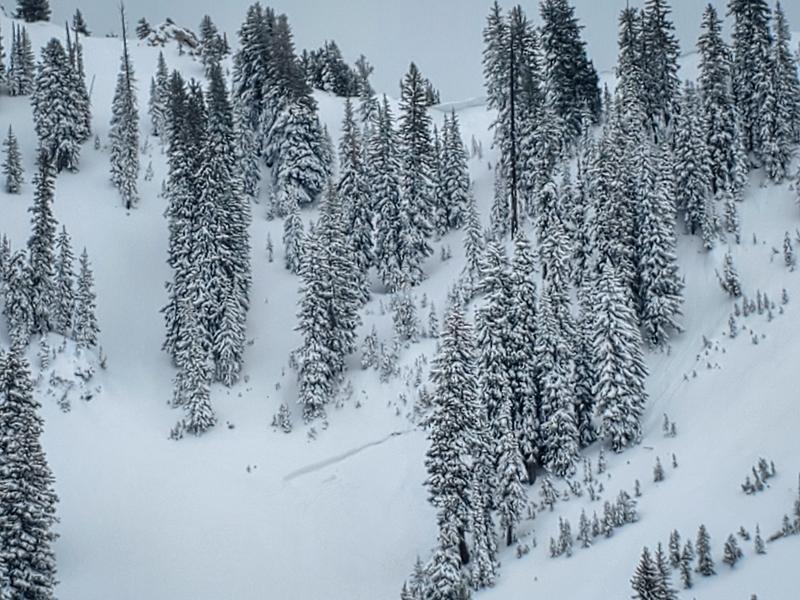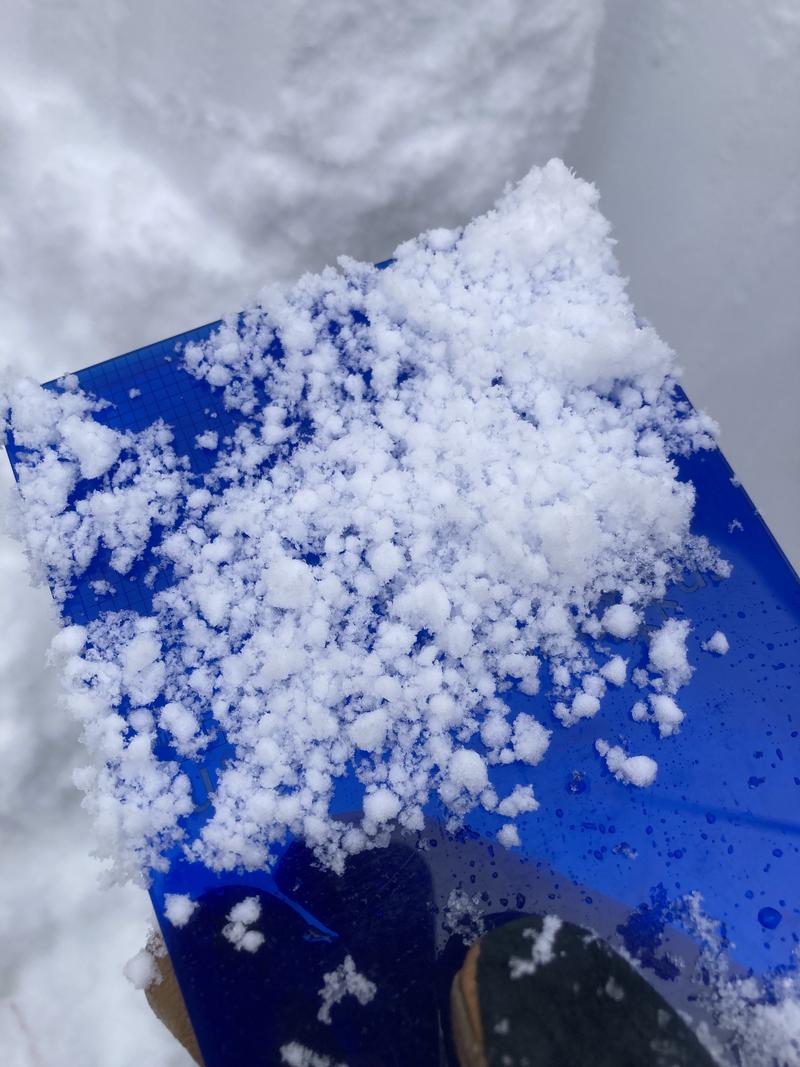Many ski areas are now closed to uphill travel in order to prepare for winter operations. Resort uphill travel policies can be found
HERE. Mill Creek Canyon Road will be closed November 8-10th for road work.
Park City Mountain Resort is doing extensive control work along the Park City Ridgeline, including the 9990 zone, Mcconkey's and the Jupiter area. Please avoid resort terrain.
Snow: As of 5 a.m. an additional 3-5 inches of snow fell overnight and is still coming down. In the last 48 hours, the snowpack has more than doubled and most places have received dense, heavy snow containing 3 to 4.6 inches of water. Overall snow amounts vary a lot because of temperatures throughout the storm; however, above 9000 ft there is about 2-3 ft of new snow.
This morning, it is overcast and snowing lightly in the mountains. Temperatures are in the single digits to low teens F and winds are primarily from the west-northwest and moderate. Mid-elevation winds are averaging 5-15 mph with gusts near 25 mph. Upper-elevation winds are averaging in the mid-twenties with gusts near 35 mph. At the uppermost elevations, near 11,000', winds are averaging near 40 mph with gusts near 60 mph.
Today, the winter storm warning ends this morning at 11 AM. Snow showers will continue through the late morning before dry weather begins to move into the area. Temperatures will be in the upper teens F. Winds will remain moderate and west-northwesterly, gusting up to 45 mph at the highest elevations. Total accumulation today should be light, with another trace to 3" of snow.
Yesterday, both natural and human-triggered avalanches were reported in the backcountry. These soft slab avalanches all failed 1-2' on the new snow, old snow interface, or density change within the storm. Check out the list of reported avalanches
HERE.Naturally triggered avalanche reported in West Bowl - Approx 18" deep and 70' wide. (Photo: S. Kuznetsov)
As well, an automated system from UDOT detected a few natural avalanches occurring in Little Cottonwood Canyon in the early morning hours and ski patrols were able to get some results throughout the day with explosives.









